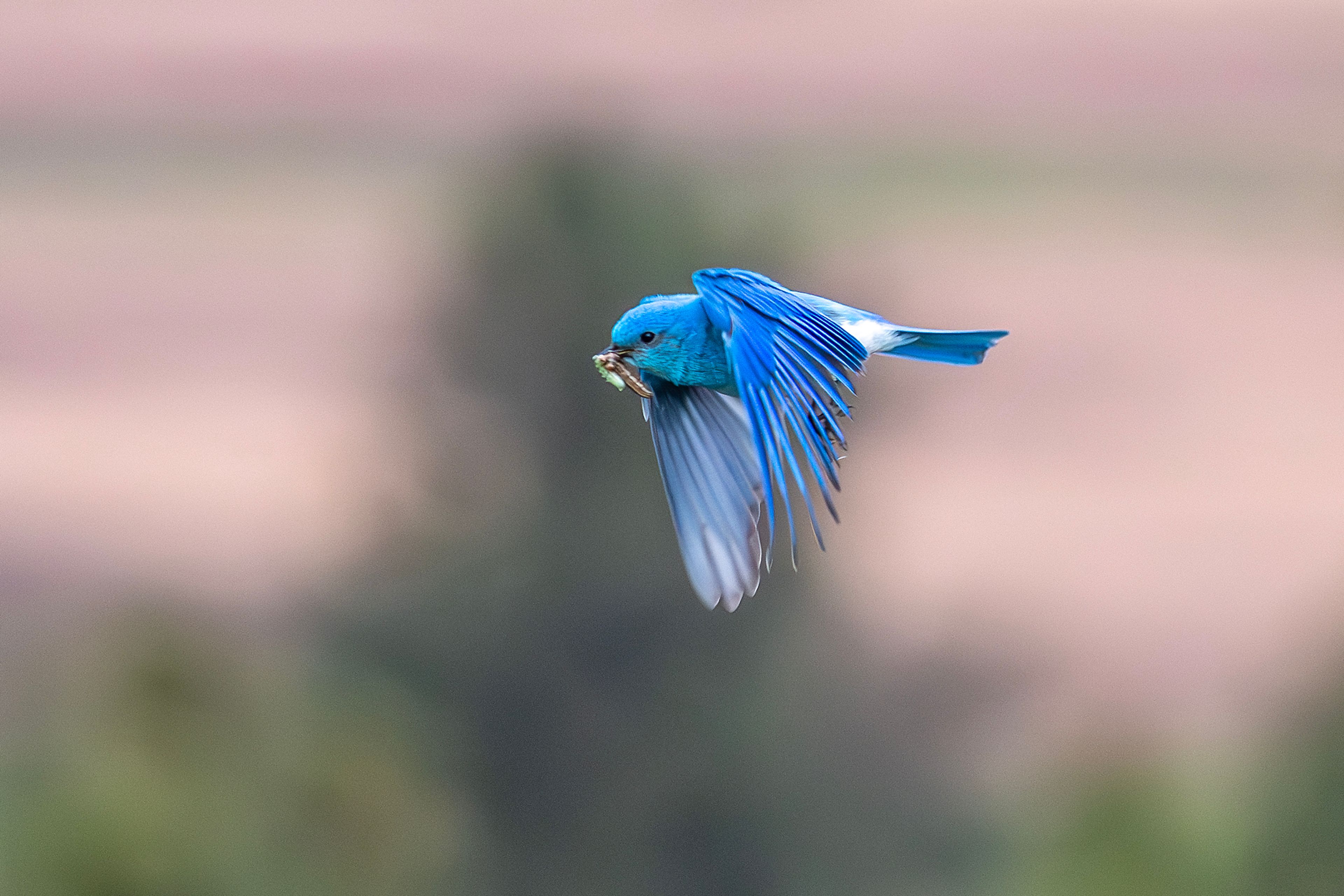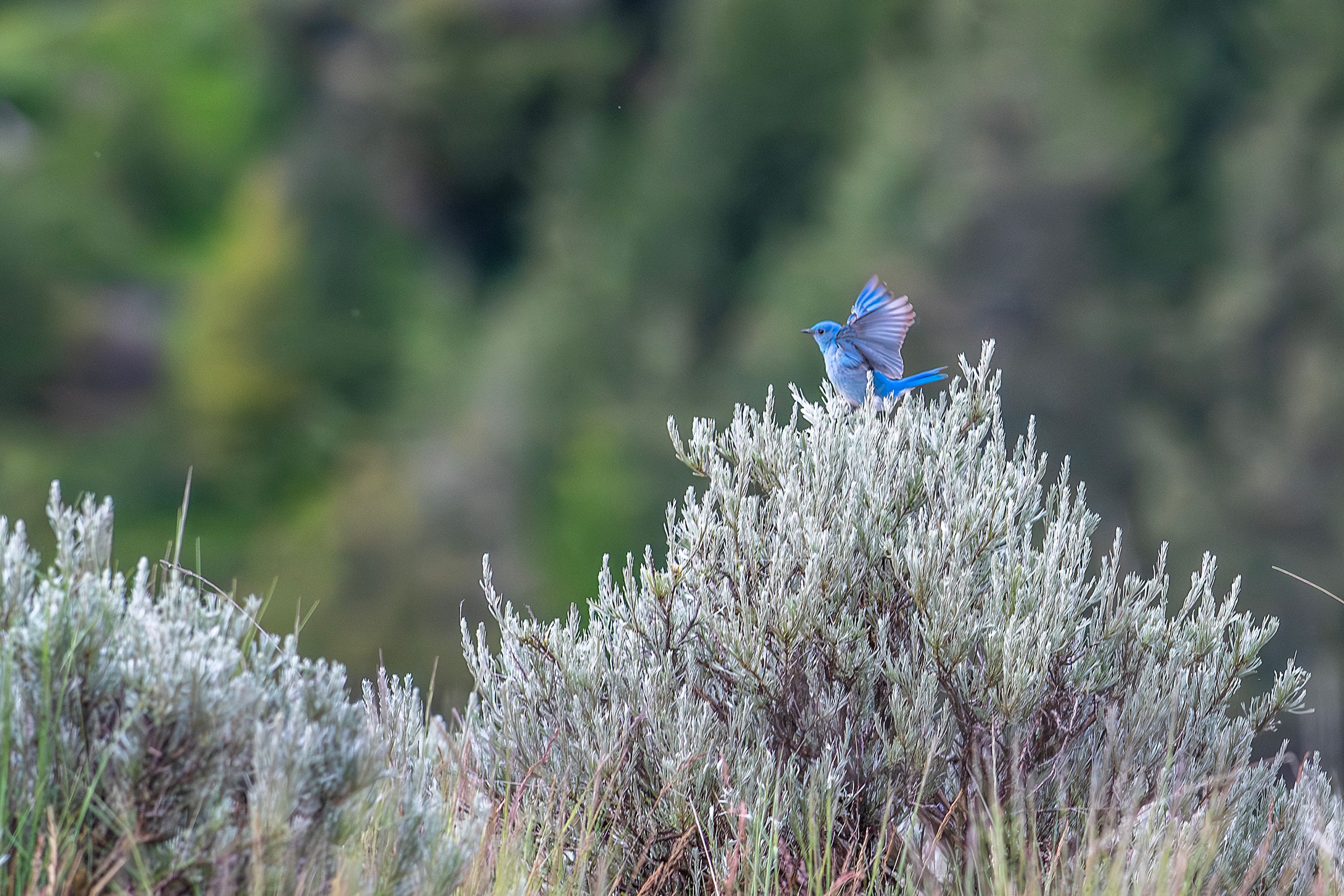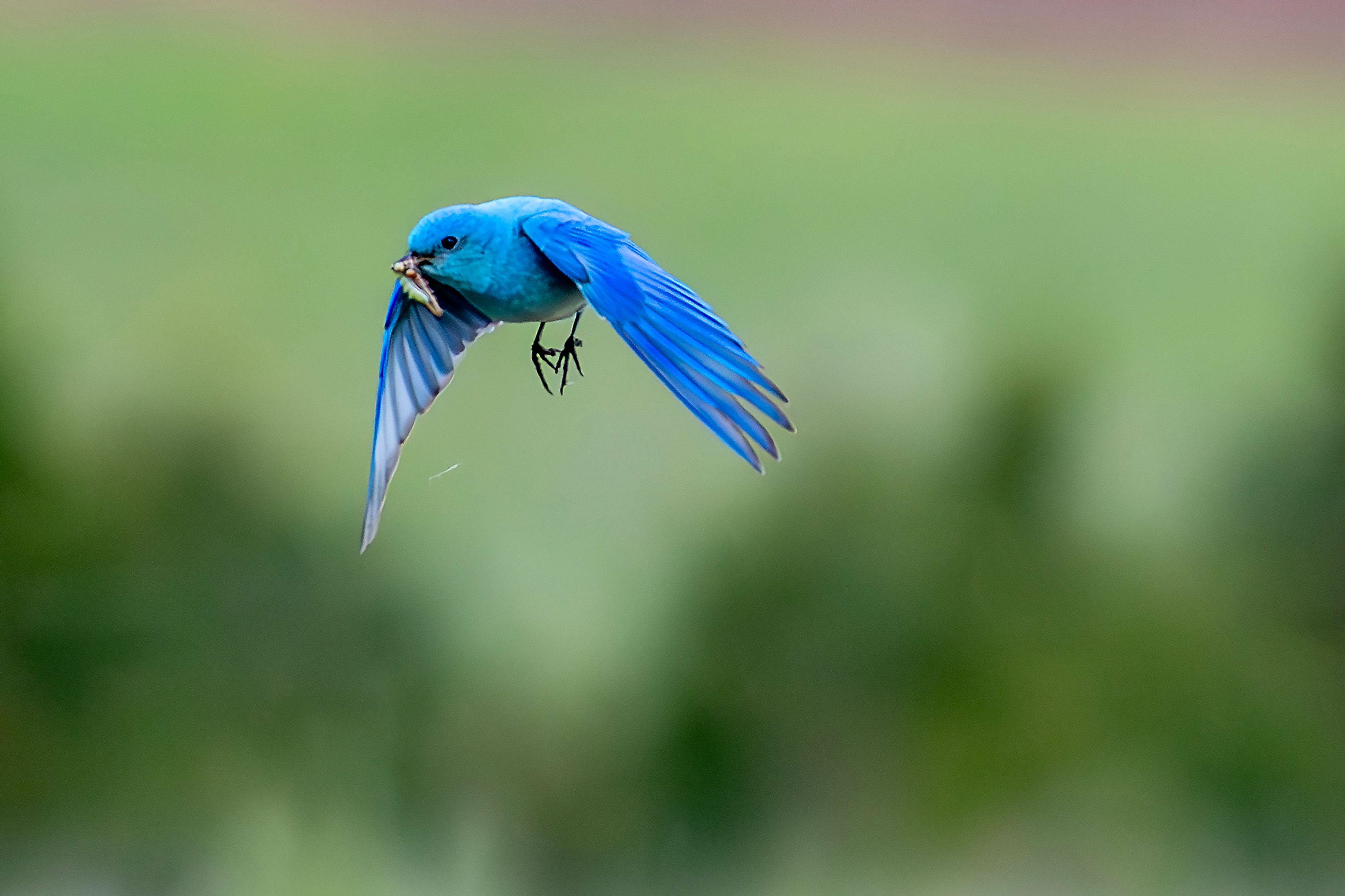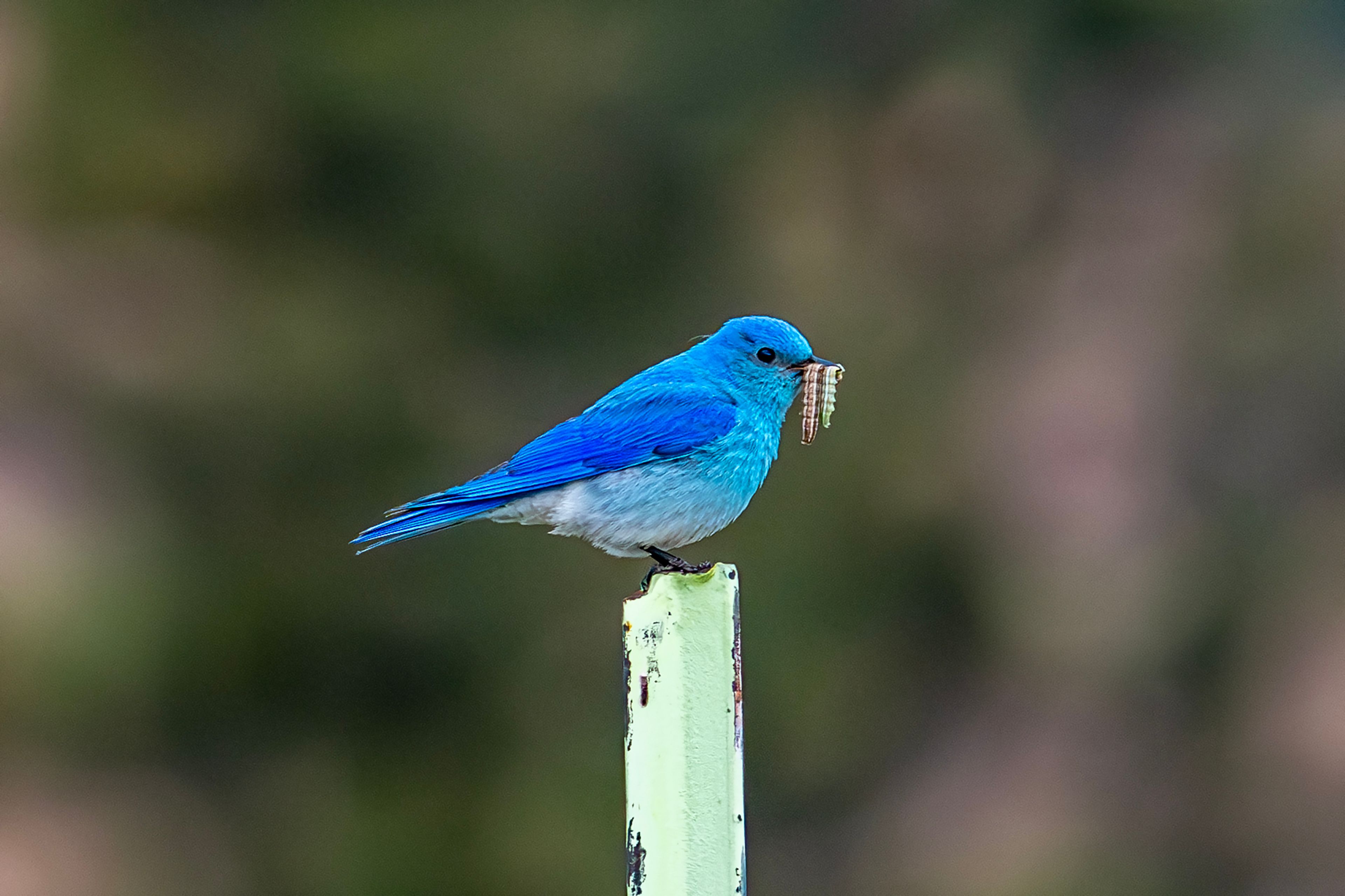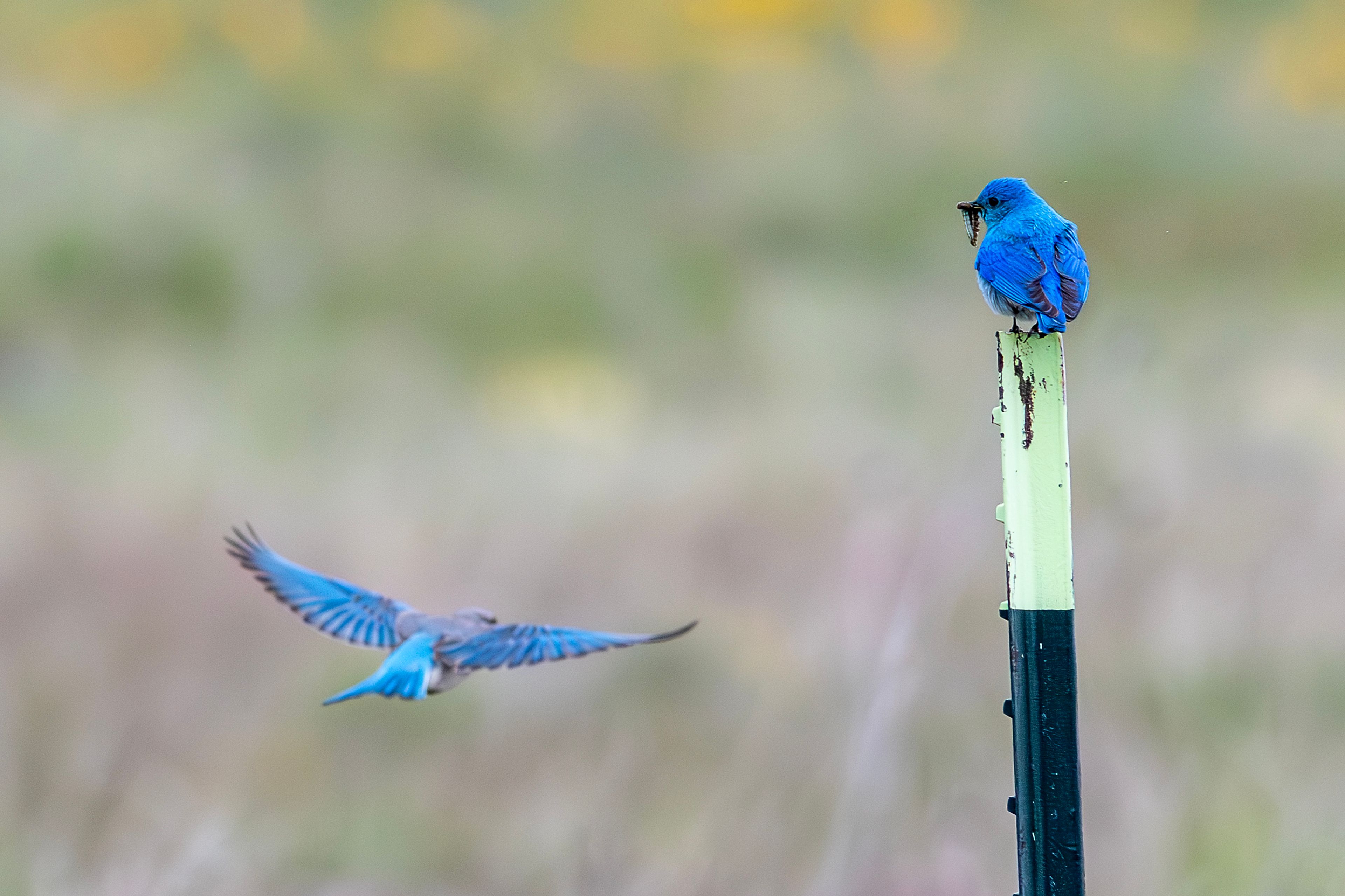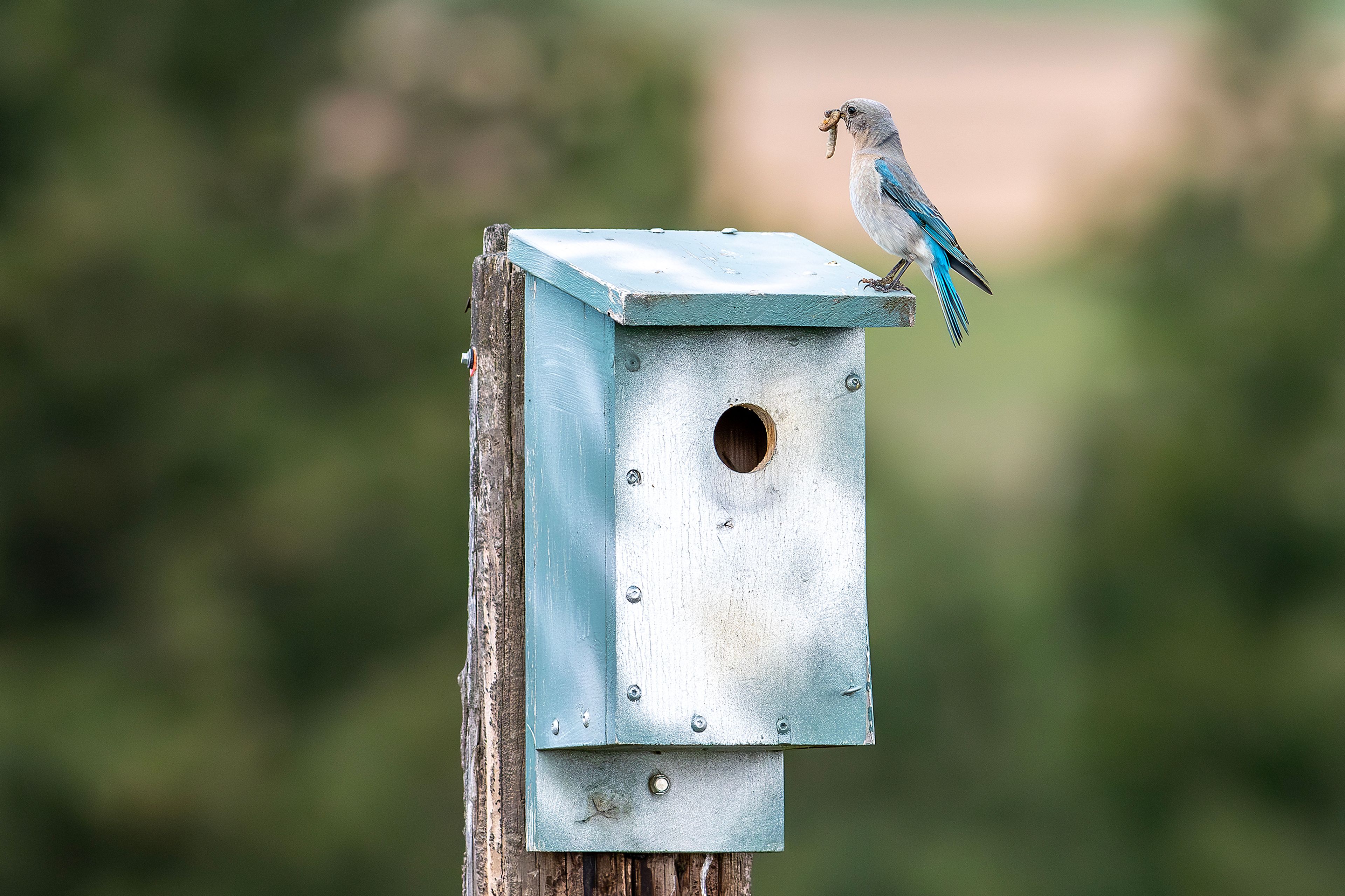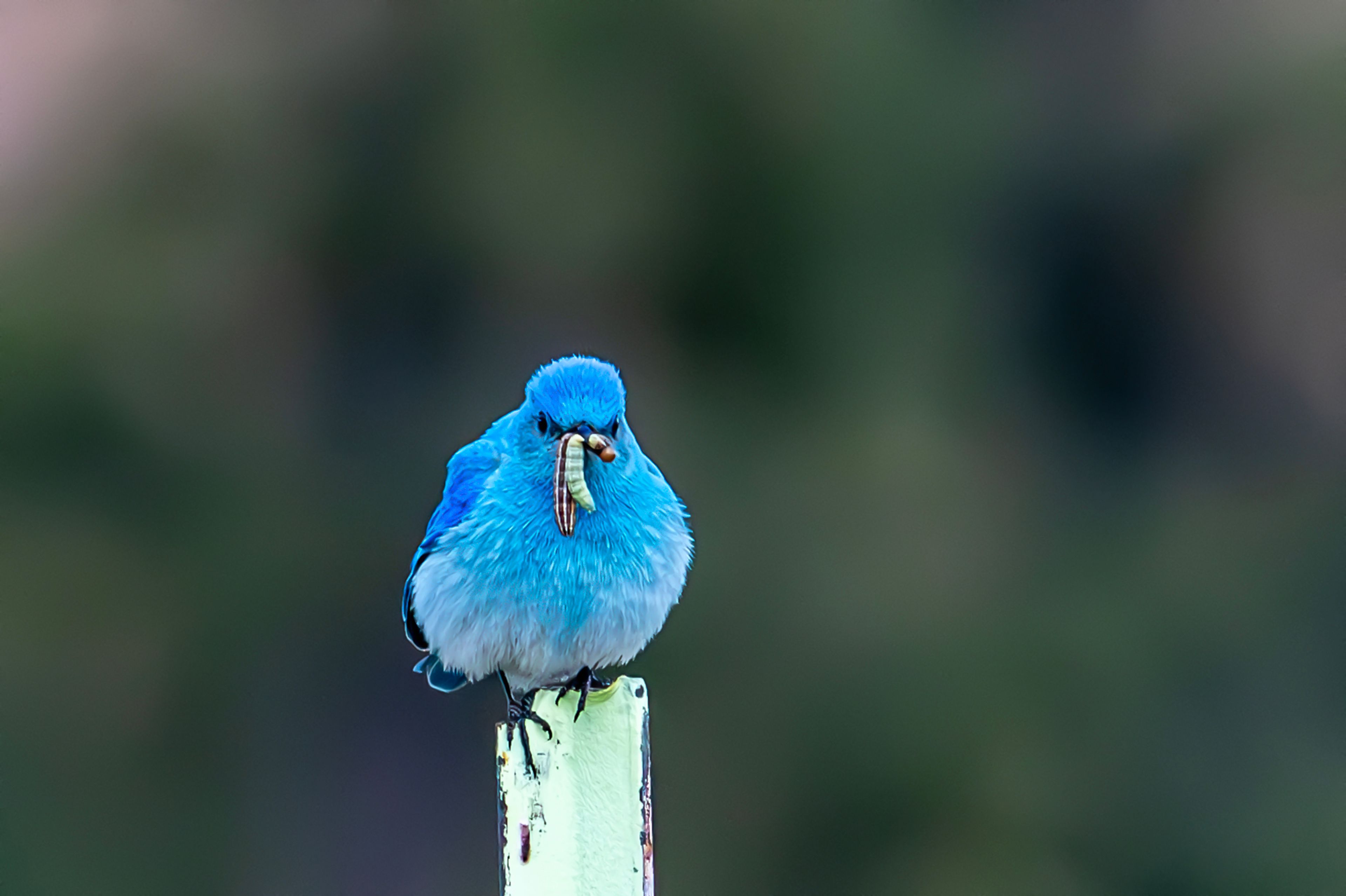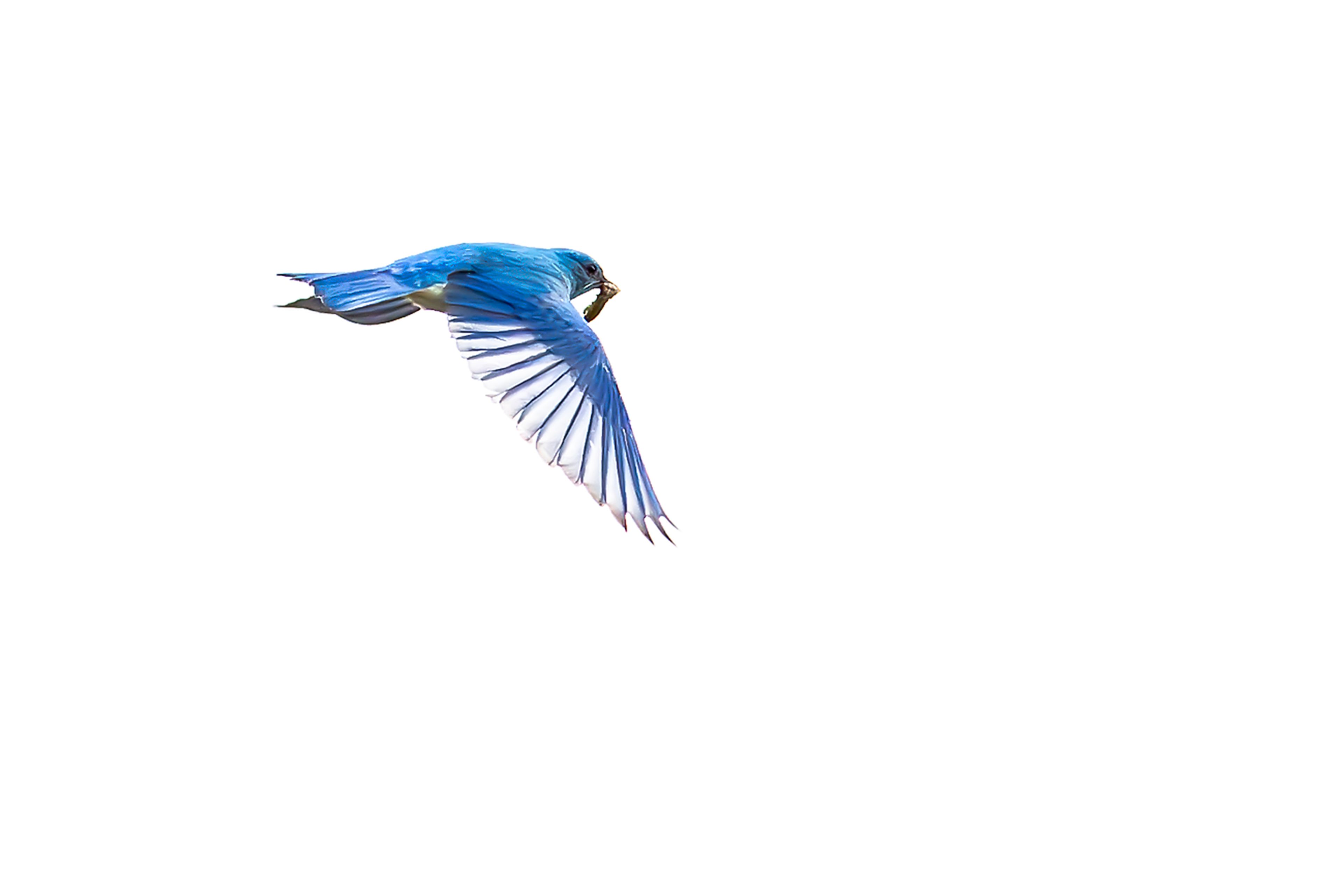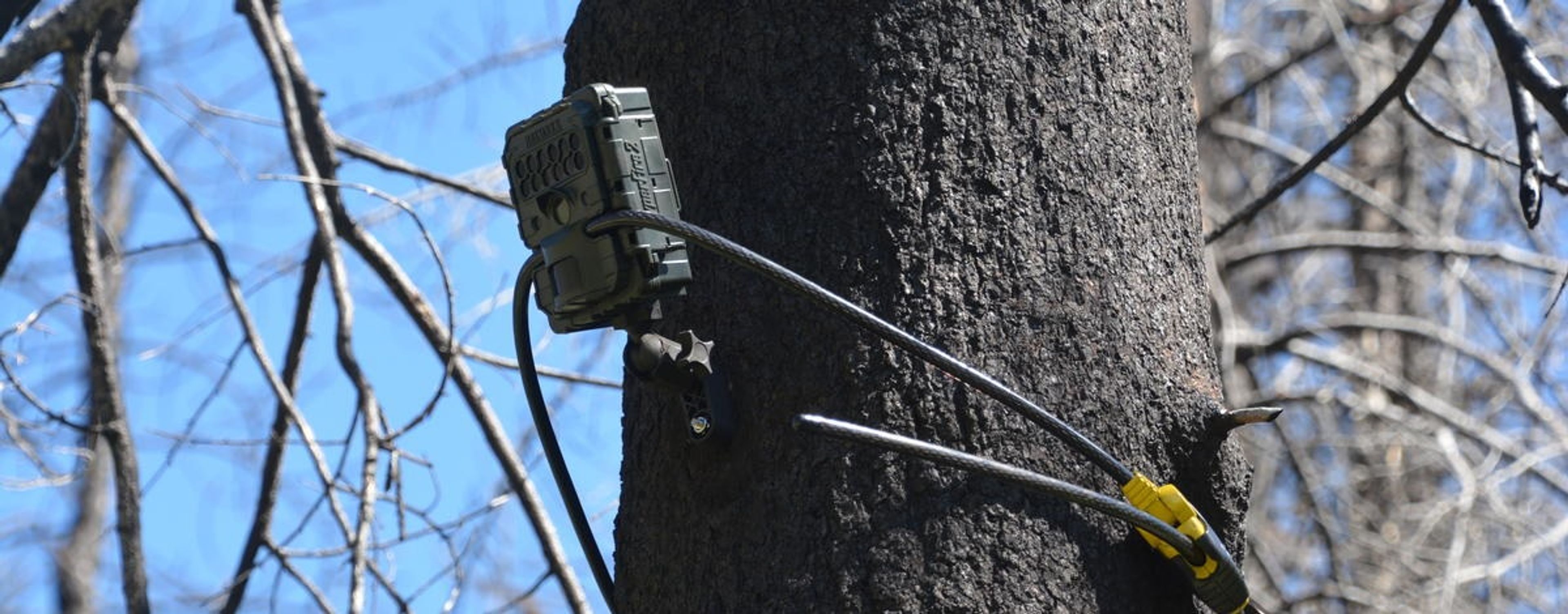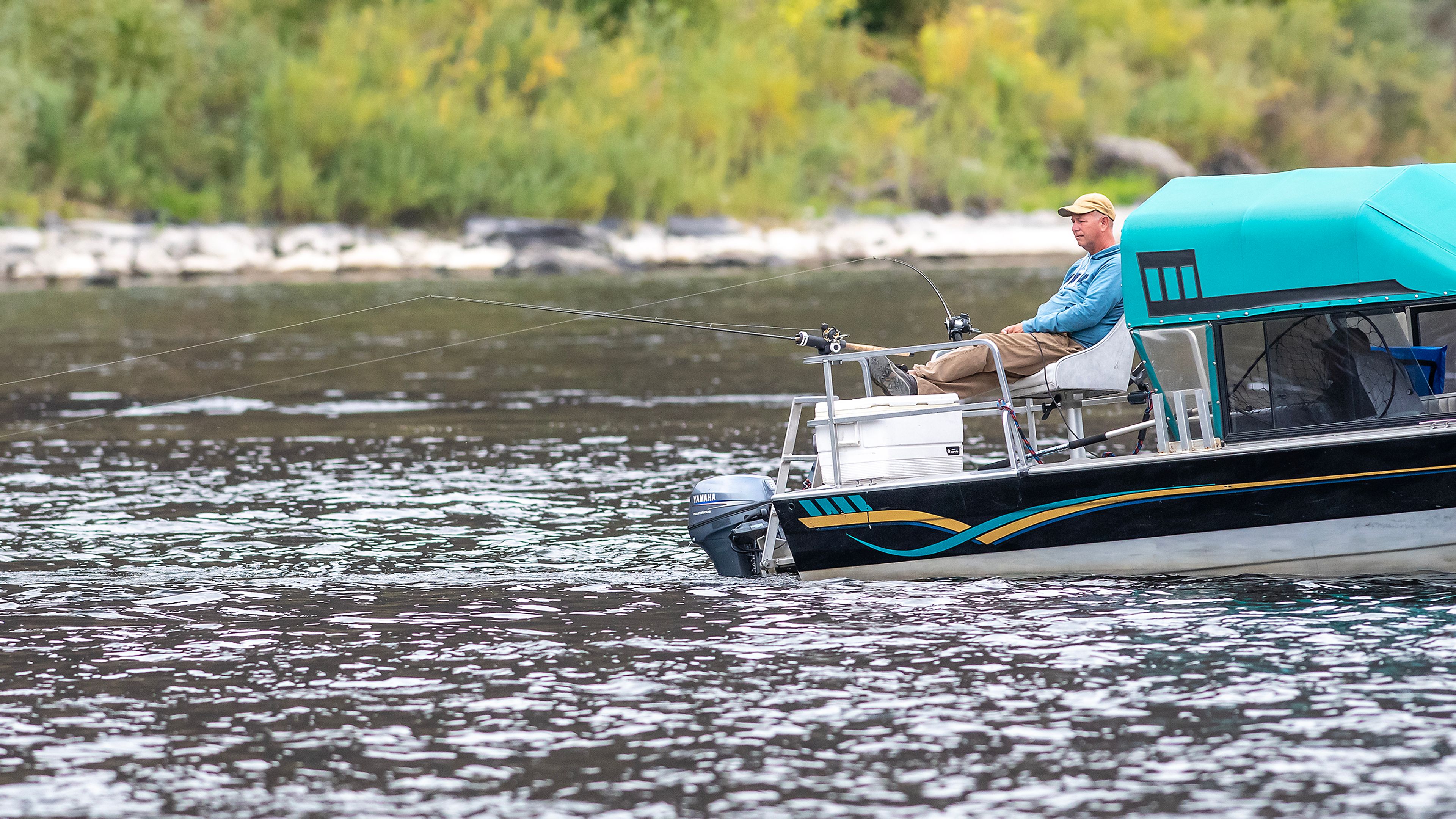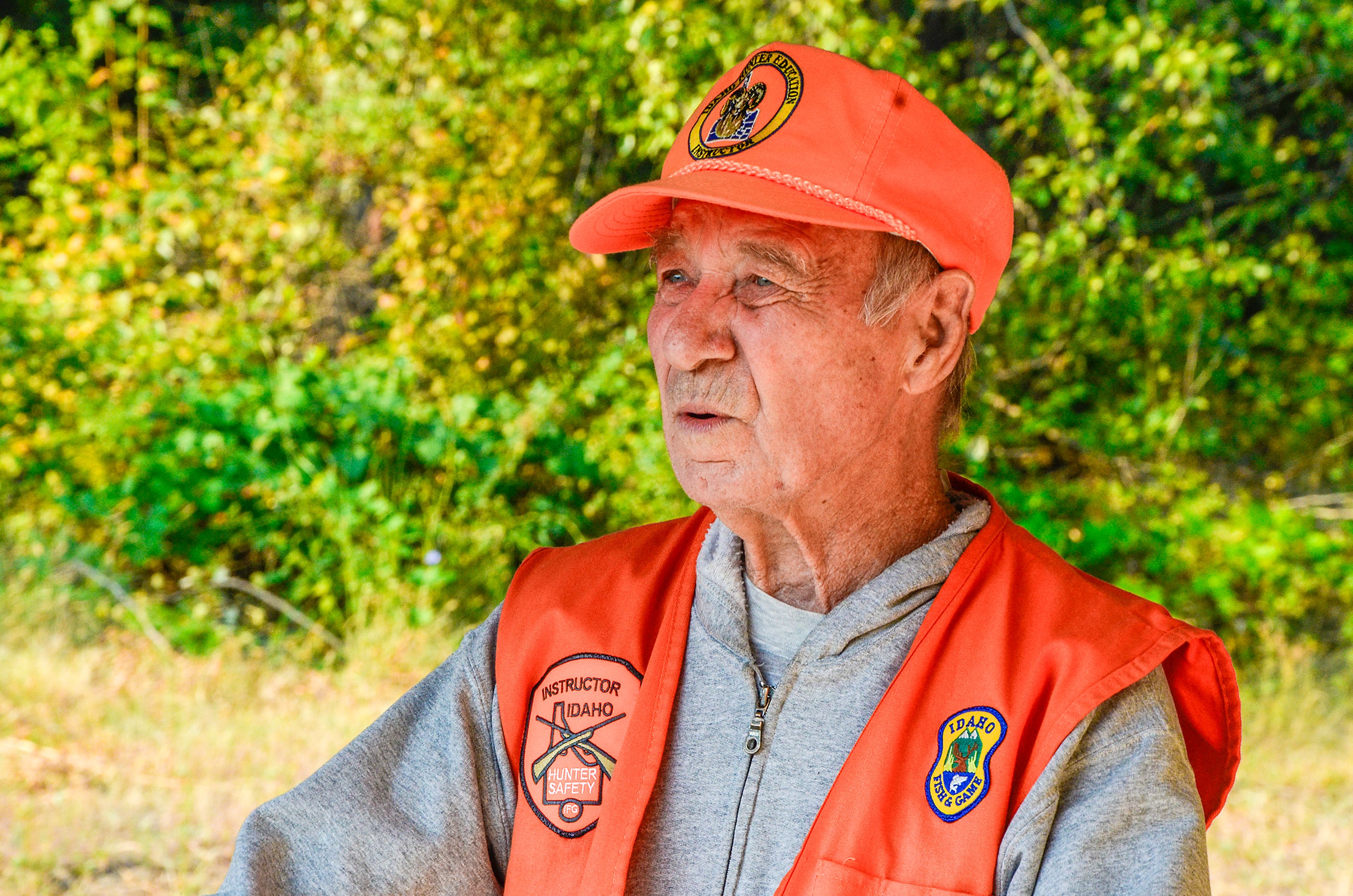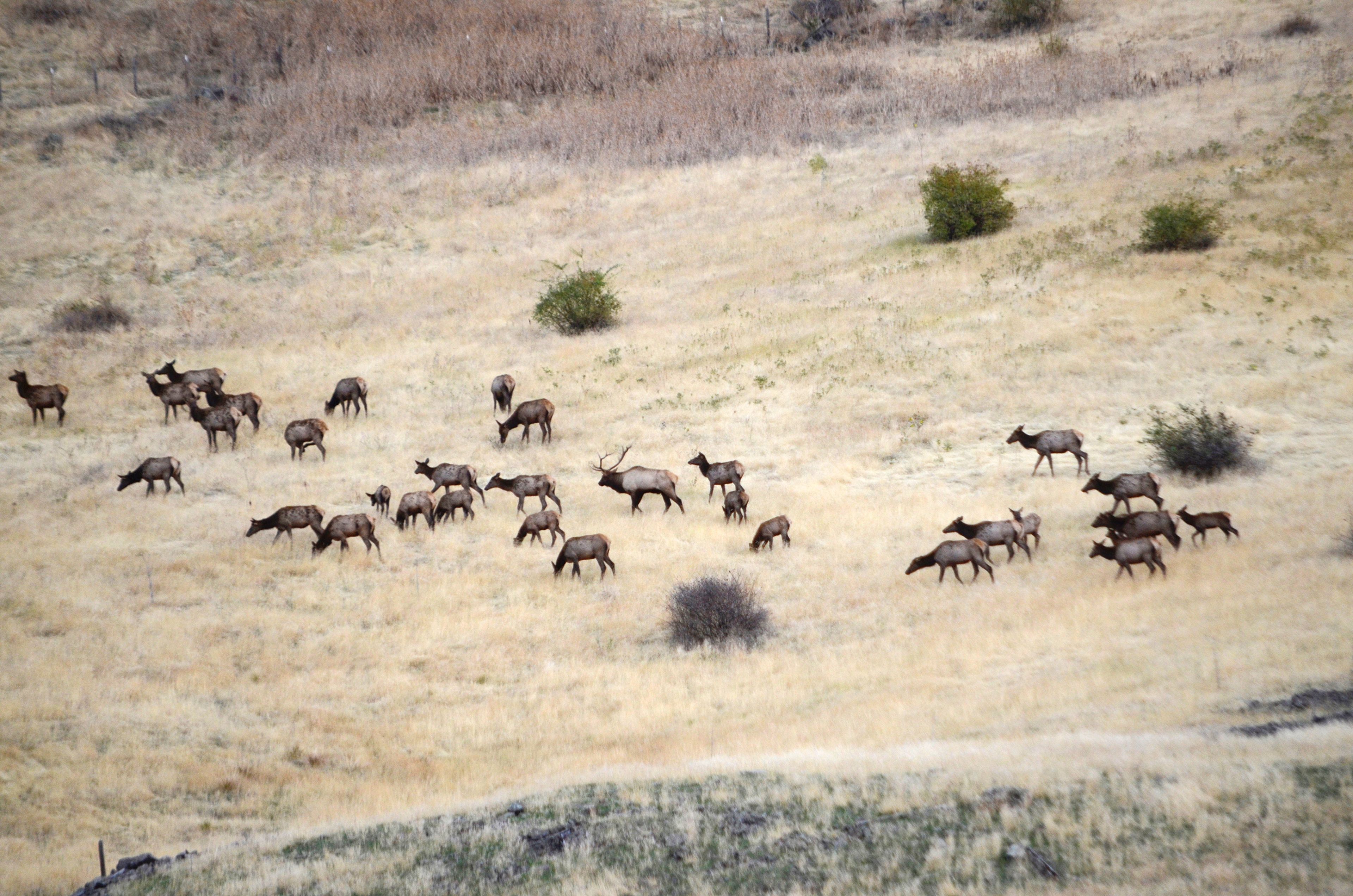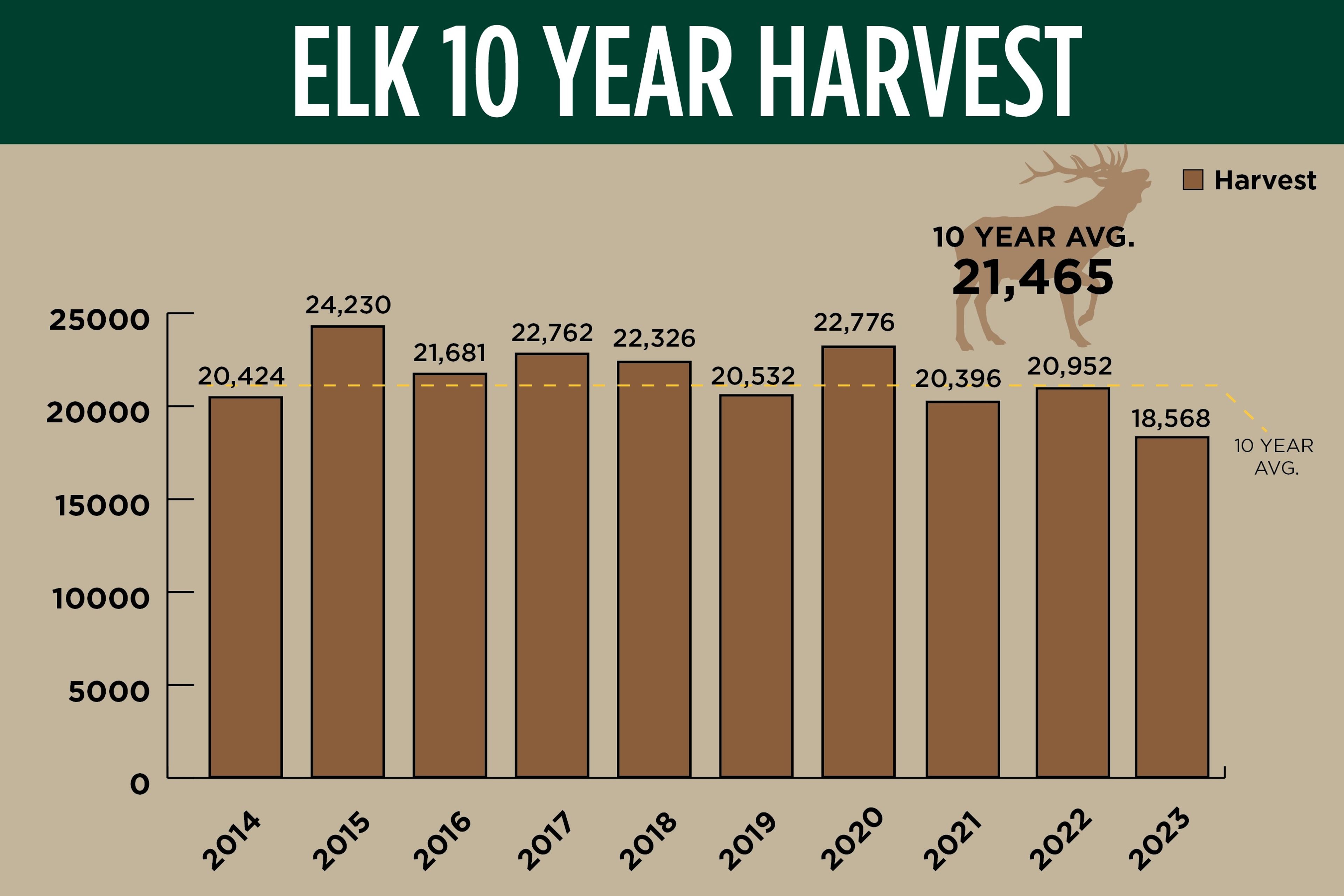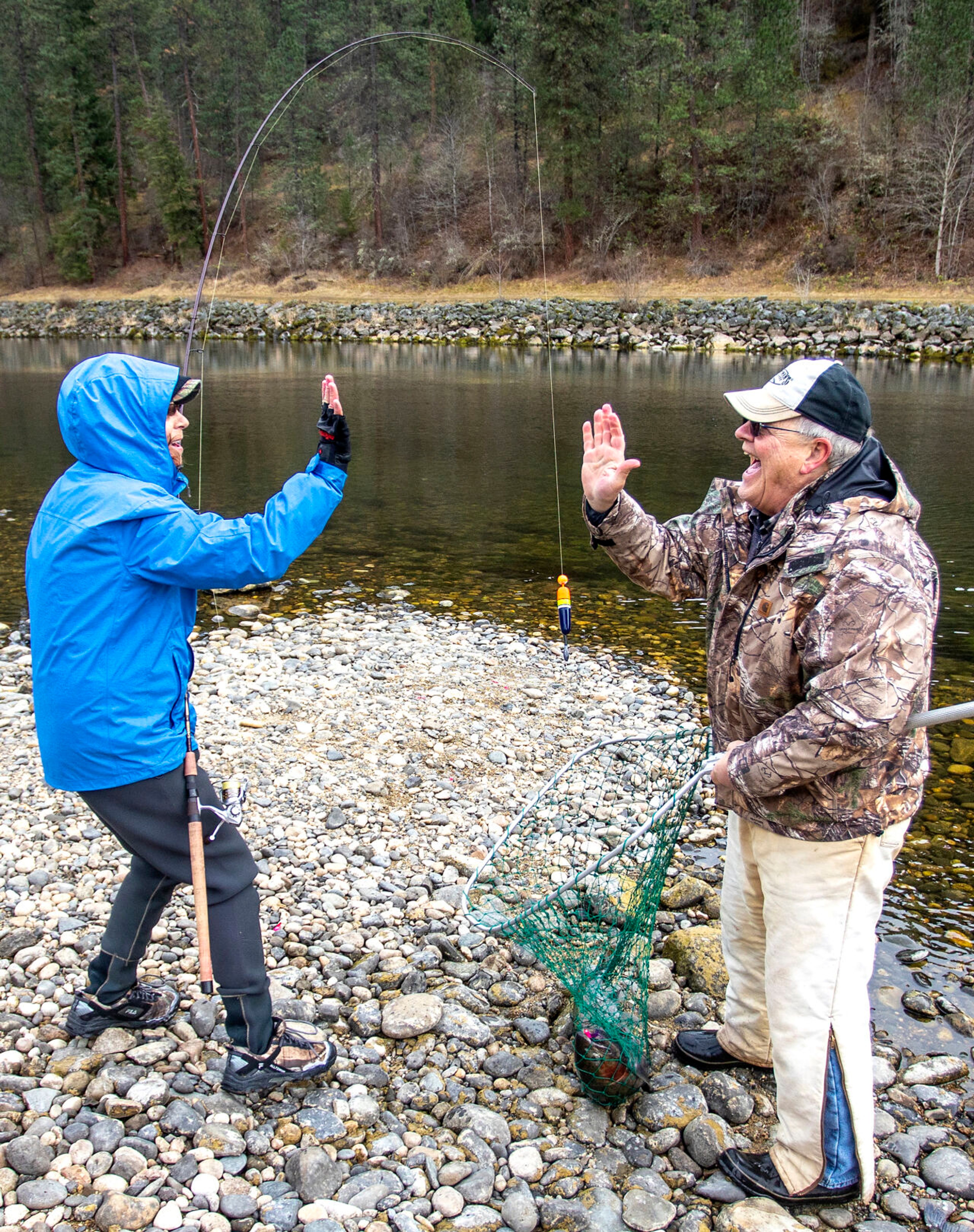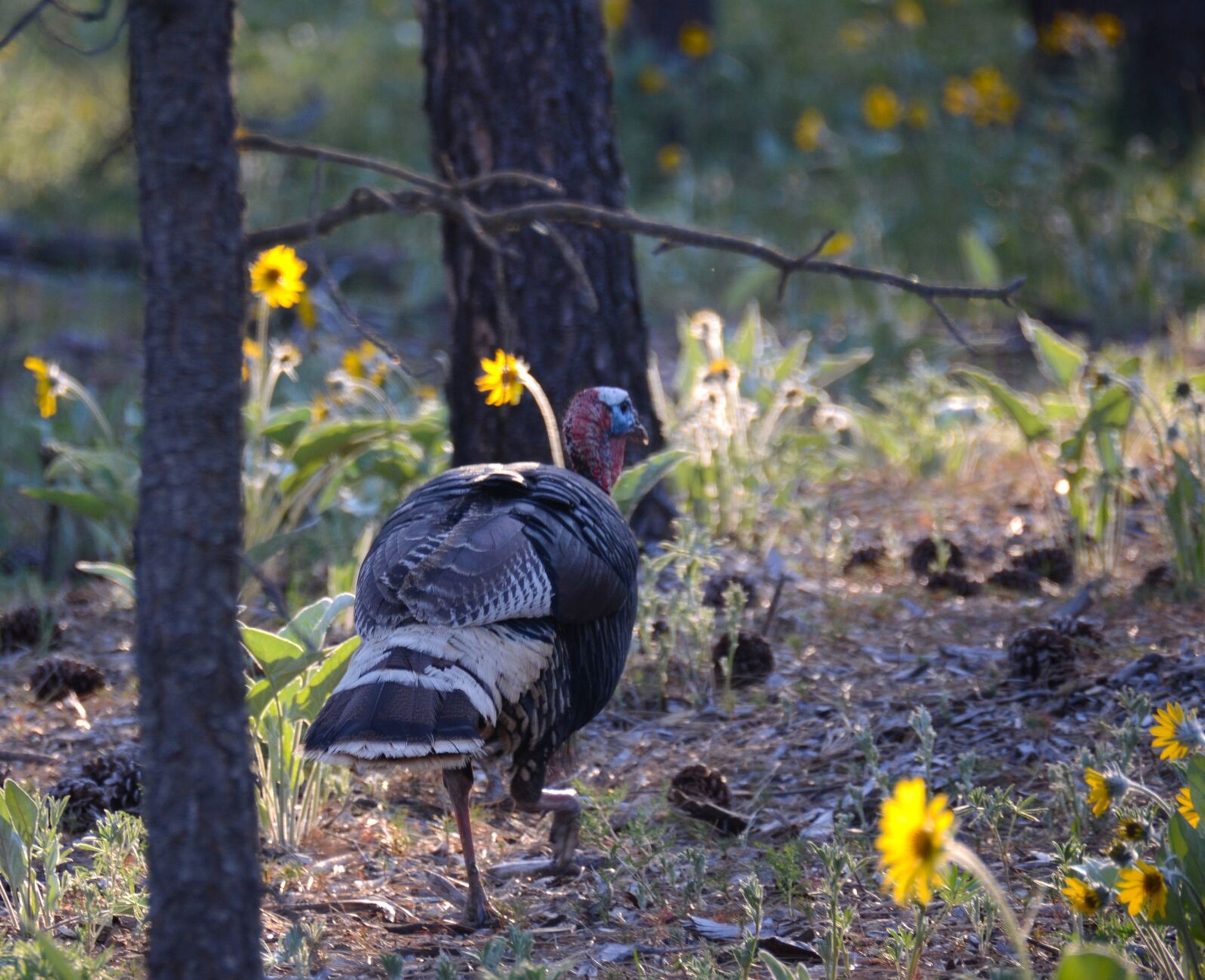Nature is in full color right now.
Prairie grasses are verdant green and wildflowers are popping like fireworks. But nothing quite compares to the vibrancy of mountain bluebirds.
It’s a hue that seems almost alien. Maybe one might expect such visual bombast in the tropics, but not on the high prairies of the Pacific Northwest.
Yet they are here and now is a wonderful time to see them. They are tending their young and the male and female can reliably be found bringing food to their nests. Mountain bluebirds, the state bird of Idaho, and their cousins western bluebirds can often be seen near nest boxes affixed to fence posts where prairies and forests meet.
“Bluebirds are one of the species that have really benefited from people putting up nest boxes,” said Keith Carlson, an avid birder from Lewiston. “All the bluebird houses you see sprinkled around the countryside really attract bluebirds.”
Both males and females are blue but, as with many bird species, it’s the male that is more showy. Their heads, breasts and backs are a sort of turquoise blue and their wings somehow turn up the volume, especially as they flit in flight.
“They are just that splash of blue, particularly when you see that first one of spring,” said Joel Sauder, nongame biologist for the Idaho Department of Fish and Game at Lewiston. “I see them outside of McCall and in the Long Valley and you just see a splash of blue sitting on a fence post and they are a harbinger of spring.”
They can be found on the Camas Prairie, Palouse and the slopes of the Blue Mountains. Near Clarkston, Peola Road and Cloverland Road are good places to look. Carlson said both mountain bluebirds and western bluebirds can be found near Anatone, although generally not together.
“None of us have ever figured out which habitat the two different species like. We don’t see them together very often. There is some difference in habitat preference visible only to the bluebird eye.”
Western bluebirds have rusty-colored breasts.
Barker may be contacted at ebarker@lmtribune.com or at (208) 848-2273.
